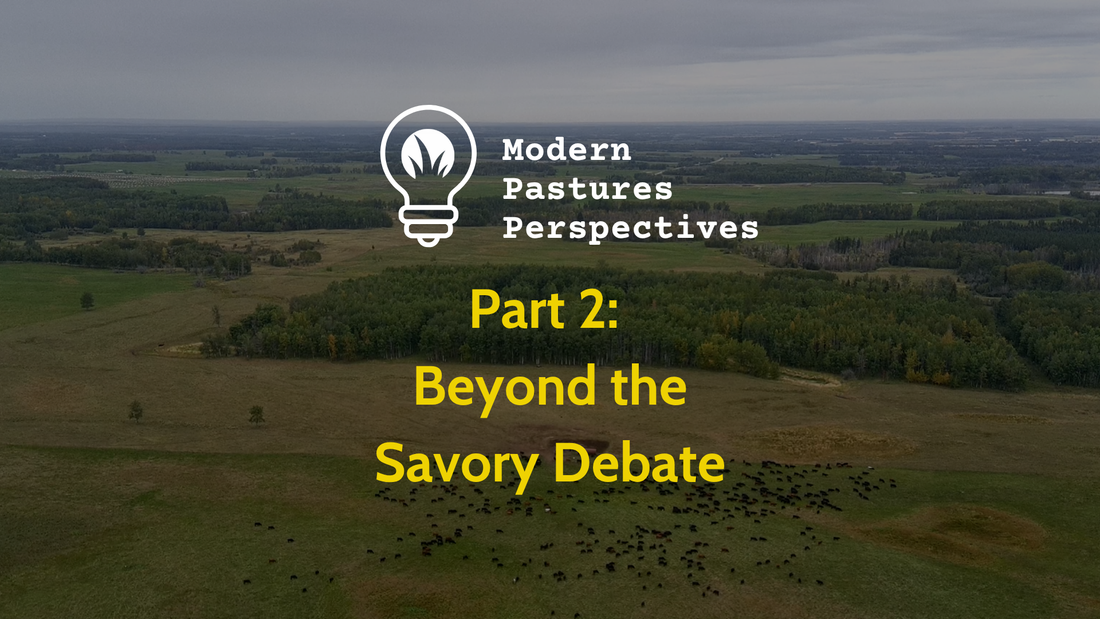
Regenerative Agriculture: Beyond the Savory Debate
How systems thinking and regenerative practices are redefining our understanding of livestock's role in ecosystem health
In our previous post, we explored the scientific debate surrounding Allan Savory's Holistic Management approach. While that controversy continues, a broader body of research on regenerative agriculture has emerged that transcends the Savory debate and offers compelling evidence for the benefits of well-managed livestock in appropriate contexts.
This expanding field of study takes a more nuanced, systems-based approach to understanding how livestock interact with landscapes—moving beyond single-metric evaluations to consider the complex interplay between soil health, carbon cycles, water systems, biodiversity, and agricultural productivity.
How Regenerative Agriculture Research Has Deepened Our Understanding
Traditional agricultural research often isolates variables to study singular cause-and-effect relationships—a valid approach for many questions, but one that can miss the emergent properties of complex natural systems. Regenerative agriculture research has evolved to consider:
Whole Systems Rather Than Isolated Components
Dr. Richard Teague's research exemplifies this evolution. Rather than asking simply whether grazing is "good" or "bad," his work examines how different grazing practices affect multiple interconnected factors: soil carbon, water infiltration, plant diversity, microbial communities, and overall ecosystem function. This holistic approach better captures the complexity of natural systems.
Management Practices Rather Than Just Livestock Presence
Modern research distinguishes between different management approaches rather than treating "grazing" as a uniform practice. As Teague notes, "Under the right management, cattle can make great things happen for the climate and for soil. Under poor management... it's the way the cattle have been managed that has done it."
Long-Term Field Studies on Working Farms
Some of the most compelling evidence comes from comparing neighboring properties with different management histories but similar environmental conditions. These real-world comparisons often reveal dramatic differences that aren't captured in short-term, plot-based experiments.
Evidence for the Benefits of Well-Managed Livestock
This systems-oriented research has demonstrated several key benefits of properly managed grazing:
Soil Health and Structure
When comparing farms using Adaptive Multi-Paddock (AMP) grazing to conventional neighbors, researchers have documented striking differences in soil structure and function. Teague's research found farms practicing regenerative grazing had "much more grass even though they had twice as many animals as their neighbors" because "they were producing more grass by managing in a way that allowed recovery of the plant leaves and roots after grazing, and this benefited the soil infiltration rates and fertility."
This improved soil structure comes from the combination of:
- Root growth during recovery periods
- Increased organic matter incorporation
- Enhanced microbial activity
- Improved aggregate stability
Carbon Sequestration
Properly managed grazing has demonstrated significant potential for carbon sequestration. Research confirms that "soil organic matter (SOM) is an indicator of the fertility, water retention capacity, and structure of a soil" and that skillfully managed herbivory can "substantially affect SOC [soil organic carbon] as well as nitrogen cycling on grazing lands."
A 2016 paper by Teague and colleagues calculated that if regenerative practices were applied to 25% of cropland and grassland in the U.S., it could mitigate the entire carbon footprint of North American agriculture—a more modest but still significant claim than Savory's global projections.
Drought Resilience and Water Cycle Restoration
Perhaps the most immediately practical benefit in many regions is improved water management. Studies comparing "the impacts of alternate grazing management practices including heavy continuous, light continuous, and adaptive multi-paddock grazing" have found significant differences in "hydrological conditions and streamflow characteristics."
Improved infiltration rates mean that rainfall stays where it falls, reducing both flooding and drought impacts. In a changing climate with more extreme weather patterns, this water cycle restoration represents a critical adaptation strategy.
Biodiversity and Ecosystem Function
Research exploring grazing management that emulates "the fast and short grazing periods of co-evolved wild herds of native grazers, followed by long recovery periods" has demonstrated "improved water infiltration, decreased soil erosion, increased soil fertility, vegetative and ecosystem biodiversity, habitat for rare grassland birds, increased vegetation productivity, and increased soil organic carbon stocks."
This enhanced biodiversity creates resilience against pests, diseases, and climate fluctuations while supporting critical ecosystem services.
The Methane Question: A More Complete Understanding
One common criticism of livestock focuses on methane emissions. However, this concern often fails to consider the complete carbon cycle and important contextual factors:
Biogenic vs. Fossil Carbon Cycles
Methane from livestock is part of the biogenic carbon cycle—carbon that was recently atmospheric CO2 before being fixed by plants. This differs fundamentally from fossil methane, which introduces new carbon into the active cycle from long-sequestered sources.
Comparing Natural Alternatives
Plant matter will produce methane through decomposition regardless of whether consumed by herbivores. In many ecosystems that co-evolved with large herds of grazing animals, managed livestock may actually reduce methane emissions compared to alternative decay pathways.
Net Carbon Balance
The most important metric isn't isolated emissions but the net carbon balance of the entire system. Research now examines whether "ruminants actually increase soil carbon sequestration to reduce overall greenhouse gas emissions" when managed appropriately. This net-balance approach provides a more complete picture than focusing on emissions alone.
Why Context and Management Matter More Than Absolutes
The evolution of research in this field increasingly points to the critical importance of context and management expertise:
Ecological Context
Different landscapes have different evolutionary histories and respond differently to grazing. Areas that co-evolved with large herds of ungulates often benefit from properly managed grazing, while other ecosystems may be better served by different approaches.
Management Skill and Adaptation
Perhaps most importantly, success depends on the skill, observation, and adaptability of the manager. The best practitioners make frequent adjustments based on plant recovery, soil conditions, weather patterns, and animal health—a level of attentiveness that's difficult to standardize in research protocols.
The Shortcomings of Critics' Perspectives
Critics of livestock integration in regenerative systems often fall into several conceptual traps:
Single-Metric Thinking
Focusing solely on isolated metrics like methane emissions without considering the complete ecological context oversimplifies complex systems. This reductionist approach misses the emergent properties that make regenerative systems function.
Context-Free Generalizations
Blanket statements about livestock being universally harmful or beneficial ignore the crucial importance of context, management, and ecosystem type. The same practice that restores one landscape might damage another.
Ignoring Practical Evidence
While peer-reviewed research is essential, dismissing the consistent results achieved by skilled practitioners across diverse environments represents a missed opportunity to understand what works in real-world conditions.
A Path Forward: Evidence-Based Systems Thinking
At Modern Pastures, we believe the most productive approach combines rigorous research with practical wisdom and systems thinking. The evidence increasingly suggests that well-managed livestock can be powerful tools for ecosystem restoration in appropriate contexts.
Our approach centers on understanding each landscape's unique characteristics and applying management practices that:
- Honor natural cycles and ecological relationships
- Build soil health as the foundation of ecosystem function
- Use livestock as tools for landscape regeneration when appropriate
- Adapt continuously to changing conditions
We recognize that no single approach works universally, but the principles of regenerative agriculture—when applied with skill and adapted to local conditions—offer promising pathways to more resilient, productive, and ecologically sound food systems.
As the body of research on regenerative agriculture continues to grow, we remain committed to following the evidence while respecting the complexity of living systems. The most exciting frontier isn't a debate about whether livestock are "good" or "bad," but rather a deeper exploration of how we can work with natural processes to regenerate damaged landscapes and produce nutritious food in ways that heal rather than harm the earth.
